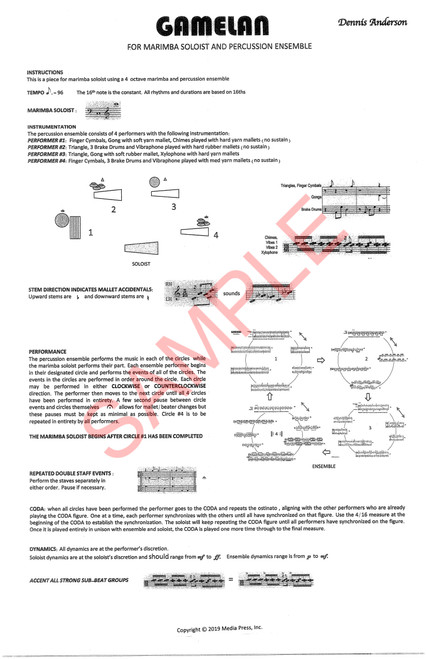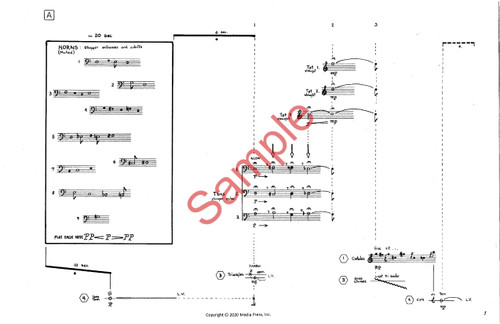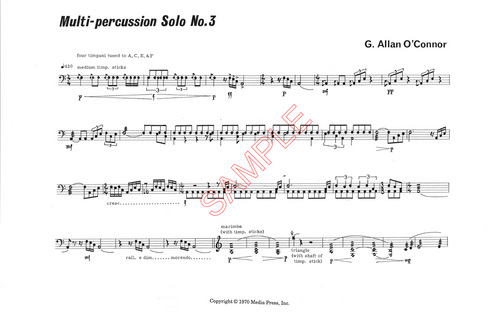Przepasc (The Precipice) for solo percussion.
Print size: Letter (8.5 x 11")
Review from Percussive Notes (2022):
“Przepac,” or “The Precipice,” is a multiple-percussion work that explores the sonic capabilities of the percussion world. Although the copyright is 2020, the title page has a date of 1978. This piece would fall into that time period quite nicely. The inspiration for the work comes from a trip the composer took to the Badlands National Forest. While there he was in awe of what the world can do over time, and the “utter insignificance of mankind.” Each movement explores these thoughts through aleatoric means.
Each movement consists of a series of events on each page that are outlined with colored boxes. The color of each box represents the tempo at which each event is to be played. Suggested durations are given for each event, and while instructions are given on how it should be played, in most instances the number of times and order of the events are left up to the performer.
The first movement, “In the Beginning We Were Only Stones,” utilizes four timpani, cymbals, temple blocks, tam-tam, and suspended cowbells, as well as a predator call. An eagle or hawk call is suggested, and it explicitly states, “NOT a duck call.” The second movement, “...And Time...,” uses timpani, inverted cymbals on the timpani, cowbells, and three crystal goblets mounted about a half inch above the timpani heads. The goblets are to be bowed. Pitch bends are indicated on the timpani part for the goblets and cymbals. The final movement, “Afterward, The Sun,” uses only the four timpani. The composer indicates that each movement may be performed alone as a standalone piece, or they may all be played together.
This work would challenge even the best performers with its 20th-century techniques and rhythmic complexities. The performer needs to be very adept at these types of works, and needs to understand aleatoric music and performance practice. This would go great on a graduate recital or professional concert. Anderson expertly explores the sonic capabilities of percussion, and it is a joy to see a historic work being brought back into the modern repertoire.
—Josh Armstrong







